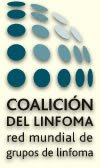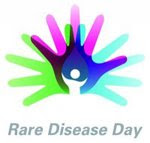Preventing Chronic Disease | The Effect of Price Reduction on Salad Bar Purchases at a Corporate Cafeteria - CDC
BRIEF
The Effect of Price Reduction on Salad Bar Purchases at a Corporate Cafeteria
Navigate This Article
Thomas E. Kottke, MD, MSPH; Nicolaas P. Pronk, PhD; Abigail S. Katz, PhD; Juliana O. Tillema, MPA; Thomas J. Flottemesch, PhD
Suggested citation for this article: Kottke TE, Pronk NP, Katz AS, Tillema JO, Flottemesch TJ. The Effect of Price Reduction on Salad Bar Purchases at a Corporate Cafeteria. Prev Chronic Dis 2013;10:120214. DOI: http://dx.doi.org/10.5888/pcd10.120214 .
.
PEER REVIEWED
Abstract
The objective of this study was to determine the effect of a price reduction on salad bar purchases in a corporate cafeteria. We reduced the price of salad bar purchases by 50% during March 2012 and analyzed sales data by month for February through June 2012. We also conducted an anonymous survey. Salad bar sales by weight more than tripled during the price reduction and returned to baseline afterward. Survey respondents reported that the high price of salad relative to other choices is a barrier to purchases. Policies that make the price of salads equal to other choices in cafeterias may significantly increase healthful food consumption.Objective
HealthPartners is an integrated health system located in the upper Midwest and headquartered in Minneapolis, Minnesota (www.healthpartners.com/public); its mission and vision statements include a focus on healthy lifestyles. Although diets that include adequate amounts of fruits and vegetables are associated with good physical and good mental health (1,2), few respondents to a HealthPartners health assessment questionnaire reported eating adequate amounts (3). The objectives of this study were to test whether, and the extent to which, the decision to eat a salad for lunch by employees who eat at the HealthPartners corporate headquarters cafeteria was influenced by salad price.Methods
A commercial vendor provides food service at HealthPartners corporate headquarters. In March 2012, HealthPartners subsidized half of the price of lunchtime salad bar items (a reduction from $0.38 to $0.19 per ounce) so that salads cost approximately the same as entrees. The subsidy was publicized through an e-mail to the 2,643 employees on the headquarters building e-mail distribution list and by a large poster in the cafeteria.Food sales were recorded by food category at the time of sale; aggregated data were available by month but not by day or week or by number of people making purchases. We compared mean daily sales in total and by food category for March with sales for February, April, May, and June. We also calculated salad bar sales by weight. We used the t test to determine whether salad bar sales in March differed significantly from sales in the other 4 study months. Price elasticity, defined as the percentage change in the quantity demanded for a product given a 1% change in product price(4), is a measure used in economics to show the responsiveness of consumers to changes in price. We calculated the price elasticity for salads.
In May 2012, we invited all employees on the headquarters e-mail distribution list to complete an anonymous online survey on their lunchtime eating patterns. The HealthPartners institutional review board did not require approval of the protocol because no data contained personal identifiers.
Results
Total daily sales by month for February, April, May, and June averaged $30,732 (standard deviation [SD], $1,523) and ranged from $29,095 in April to $32,699 in May. Daily salad bar sales for the months of February, April, May, and June averaged $3,687 (SD, $259). Daily salad bar sales in March averaged $6,747, or 83% higher than sales averaged for other months (t4 = 4.89; P = .008) (Table 1). Sales of less healthful options were somewhat but not markedly lower in March than in other months. The increase in salad bar sales by weight in March compared with other months was 366%, representing a price elasticity of 7.32.Of 2,643 invitees, 677 (25.6%) responded to the survey. Only about one-third (236/677) of respondents reported they typically purchase salads at the cafeteria, but nearly all respondents reported they increased the number of times they purchased salads during March (Table 2). Responses to the open-ended question were nearly all positive; respondents asked that the price reduction continue and frequently cited the high cost of the salad bar relative to other lunch options as a barrier to eating salad for lunch.
Discussion
Other trials showed similar results to ours. In 1 cafeteria intervention, reducing the price of salad by half increased salad consumption by 300% (5). An intervention that reduced the price of healthful choices in vending machines led to an 80% to 93% increase in purchases of low-fat snacks (6,7). A restaurant intervention showed a significant, albeit smaller, effect (8). These results contrast with a 2009 meta-analysis of 160 studies that reported that purchasing of fruits and vegetables for consumption at home is relatively inelastic — about 0.70 for fruit and 0.58 for vegetables (9). A US Department of Agriculture analysis also concluded that subsidizing fruits and vegetables in grocery stores would have little or no effect on consumption by low-income people (4).These data suggest that price elasticity is low when consumers decide how much of a product to buy in a grocery store and can be high when they are dining in a restaurant or a cafeteria. It can also be high when they are selecting items from a vending machine. In grocery stores they appear to be asking, “How much product can I buy at the current price?” (a reflection of low elasticity), and in cafeterias they appear to be asking, “Which meal can I afford?” (a reflection of high elasticity).
Our data also suggest that consumers make a trade-off between eating healthful foods and using their cash in other ways. In the HealthPartners cafeteria, a typical lunch option is $4 to $5, and the price of a salad plate is about $8. Employees could select a salad at a premium of about $20 per week, or $600 to $1,000 per year, or they could select a less healthful option and have more money to take their family out to dinner or a movie. After a year, $600 to $1,000 could buy at least part of a family vacation. Although our survey data are limited by a 26% response rate, the survey data and the 366% increase in salad sales by weight in March suggest that cost is a significant barrier to salad consumption.
The change in purchases in response to the change of price suggests that salads purchased in a cafeteria are viewed as a luxury rather than a necessity (10). Our data, and the data of others, suggest that efforts to increase salad consumption by reducing price can be effective in cafeterias. Changing the price of salads could be done without affecting total revenues if the price of less healthful items were increased. In our study setting, because salad purchases are only approximately 15% of total sales, reducing the price by half could be fully subsidized by raising the price of other products by only approximately 9%. Such action would be easy to undertake by any corporation that hosts an employee cafeteria.
Author Information
Corresponding Author: Thomas E. Kottke, MD, MSPH, HealthPartners Institute for Education and Research, 8170 33rd Ave South, PO Box 1524, MS 21111R, Minneapolis MN 55425-1524. Telephone: 952-967-5088. E-mail: Thomas.E.Kottke@HealthPartners.com.Author Affiliations: Nicolaas P. Pronk, Abigail S. Katz, Juliana O. Tillema, Thomas J. Flottemesch, HealthPartners Institute for Education and Research, Minneapolis, Minnesota.
References
- Pronk NP, Katz AS, Gallagher J, Austin E, Mullen D, Lowry M, et al. Adherence to optimal lifestyle behaviors is related to emotional health indicators among employees. Popul Health Manag 2011;14(2):59–67. CrossRef
PubMed
- Pronk NP, Lowry M, Kottke TE, Austin E, Gallagher J, Katz A. The association between optimal lifestyle adherence and short-term incidence of chronic conditions among employees. Popul Health Manag 2010;13(6):289–95. CrossRef
PubMed
- Pronk NP. An optimal lifestyle metric: four simple behaviors that affect health, cost, and productivity. ACSM’s Health & Fitness Journal 2012;16(3):39–43.
- Dong D, Lin B. Fruit and vegetable consumption by low-income Americans: would a price reduction make a difference? Washington (DC): US Department of Agriculture Economic Research Service; 2009. http://www.ers.usda.gov/publications/err-economic-research-report/err70.aspx. Accessed January 16, 2013.
- Jeffery RW, French SA, Raether C, Baxter JE. An environmental intervention to increase fruit and salad purchases in a cafeteria. Prev Med 1994;23(6):788–92. CrossRef
PubMed
- French SA, Jeffery RW, Story M, Hannan P, Snyder MP. A pricing strategy to promote low-fat snack choices through vending machines. Am J Public Health 1997;87(5):849–51. CrossRef
PubMed
- French SA, Jeffery RW, Story M, Breitlow KK, Baxter JS, Hannan P, et al. Pricing and promotion effects on low-fat vending snack purchases: the CHIPS study. Am J Public Health 2001;91(1):112–7. CrossRef
PubMed
- Horgen KB, Brownell KD. Comparison of price change and health message interventions in promoting healthy food choices. Health Psychol 2002;21(5):505–12. CrossRef
PubMed
- Andreyeva T, Long MW, Brownell KD. The impact of food prices on consumption: a systematic review of research on the price elasticity of demand for food. Am J Public Health 2010;100(2):216–22. CrossRef
PubMed
- Seale JJ, Regmi A, Bernstein J. International evidence on food consumption patterns. Washington (DC): US Department of Agriculture; 2003.
ARTÍCULO BREVE
El efecto de la reducción del precio de las ensaladas en el comedor de una empresa
Thomas E. Kottke, MD, MSPH; Nicolaas P. Pronk, PhD; Abigail S. Katz, PhD; Juliana O. Tillema, MPA; Thomas J. Flottemesch, PhD
Suggested citation for this article: Kottke TE, Pronk NP, Katz AS, Tillema JO, Flottemesch TJ. The Effect of Price Reduction on Salad Bar Purchases at a Corporate Cafeteria. Prev Chronic Dis 2013;10:120214. DOI: http://dx.doi.org/10.5888/pcd10.120214 .
.
REVISADO POR EXPERTOS
































No hay comentarios:
Publicar un comentario